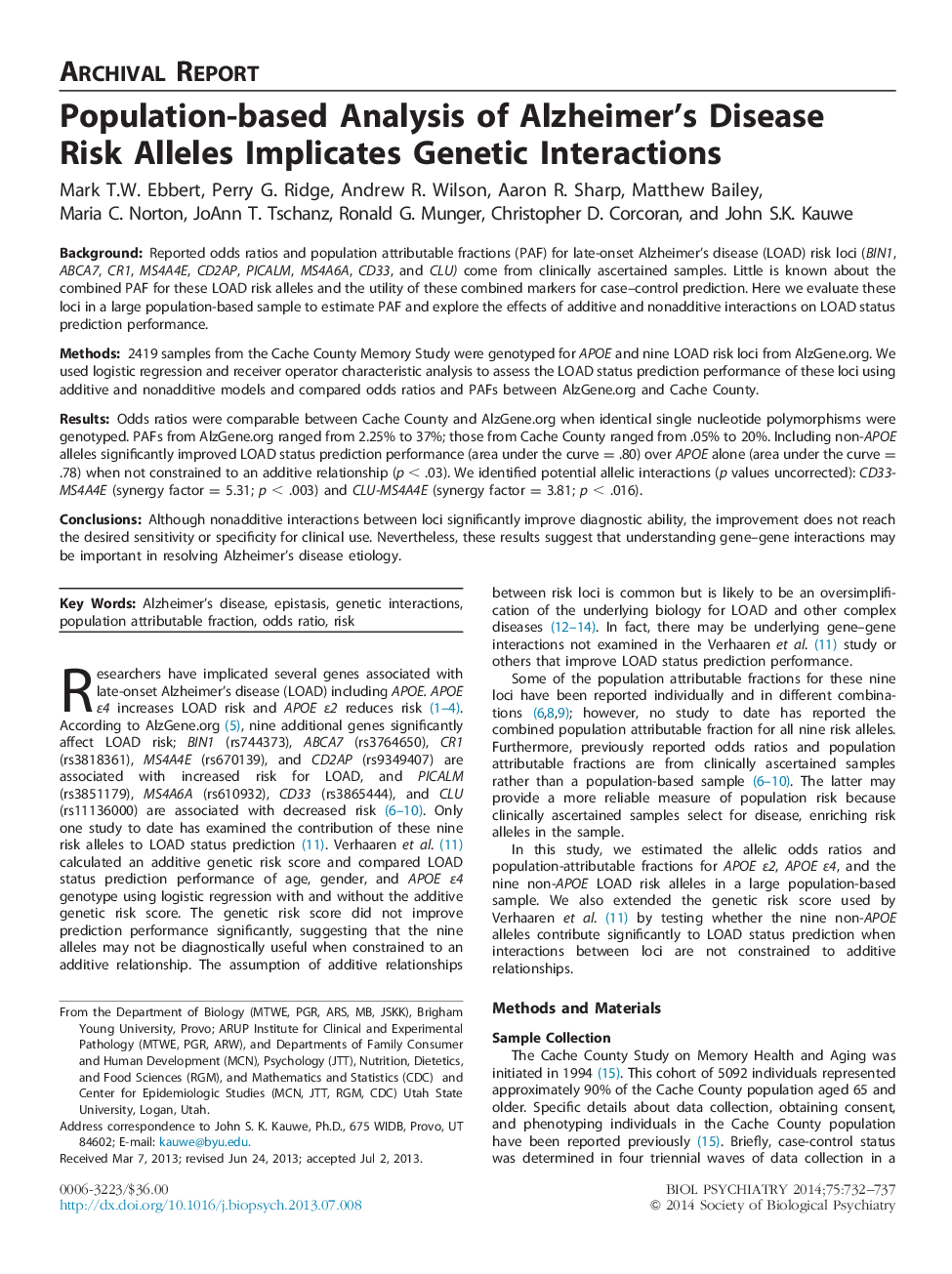| کد مقاله | کد نشریه | سال انتشار | مقاله انگلیسی | نسخه تمام متن |
|---|---|---|---|---|
| 4177425 | 1276420 | 2014 | 6 صفحه PDF | دانلود رایگان |
BackgroundReported odds ratios and population attributable fractions (PAF) for late-onset Alzheimer’s disease (LOAD) risk loci (BIN1, ABCA7, CR1, MS4A4E, CD2AP, PICALM, MS4A6A, CD33, and CLU) come from clinically ascertained samples. Little is known about the combined PAF for these LOAD risk alleles and the utility of these combined markers for case–control prediction. Here we evaluate these loci in a large population-based sample to estimate PAF and explore the effects of additive and nonadditive interactions on LOAD status prediction performance.Methods2419 samples from the Cache County Memory Study were genotyped for APOE and nine LOAD risk loci from AlzGene.org. We used logistic regression and receiver operator characteristic analysis to assess the LOAD status prediction performance of these loci using additive and nonadditive models and compared odds ratios and PAFs between AlzGene.org and Cache County.ResultsOdds ratios were comparable between Cache County and AlzGene.org when identical single nucleotide polymorphisms were genotyped. PAFs from AlzGene.org ranged from 2.25% to 37%; those from Cache County ranged from .05% to 20%. Including non-APOE alleles significantly improved LOAD status prediction performance (area under the curve = .80) over APOE alone (area under the curve = .78) when not constrained to an additive relationship (p < .03). We identified potential allelic interactions (p values uncorrected): CD33-MS4A4E (synergy factor = 5.31; p < .003) and CLU-MS4A4E (synergy factor = 3.81; p < .016).ConclusionsAlthough nonadditive interactions between loci significantly improve diagnostic ability, the improvement does not reach the desired sensitivity or specificity for clinical use. Nevertheless, these results suggest that understanding gene–gene interactions may be important in resolving Alzheimer’s disease etiology.
Journal: Biological Psychiatry - Volume 75, Issue 9, 1 May 2014, Pages 732–737
